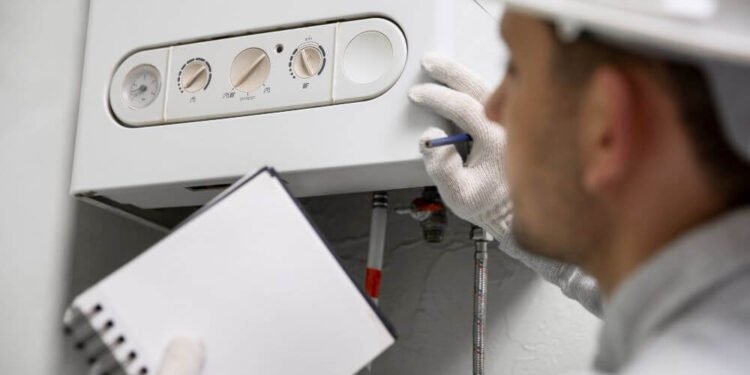During the colder months in Dayton, having an efficient heating furnace becomes necessary to ensure that your home is comfortable. But your furnace can be a serious safety threat if it is aging or not functioning properly. Being aware of the warning signs that your furnace is failing is important if you want to keep yourself safe and get through this winter comfortably.
In this post, we look at important clues that the furnace might be endangering safety. If you notice any of these warning signs, it may be time to consider professional heating furnace replacement in Dayton to ensure your home’s safety and comfort. Let’s explore the key warning signs that indicate your furnace may be compromising your family’s safety.
Unusual Noises
If your furnace is running normally, then you should not be hearing any loud or strange sounds. If you hear sounds such as rattling, banging, or screeching, mechanical issues are often at play here. These noises can be caused by loose components, worn-out parts, or a damaged blower motor. Taking care of these sounds on time is necessary to prevent increased damage and potential safety hazards.
Inconsistent Heating
A furnace has some key purposes, one of which is to keep your home nice and cozy. If certain rooms are much colder than the rest of the house, that could indicate a problem. Such an imbalance is usually due to dirty filters, blocked ducts, or a broken thermostat. This is important for comfort and safety; you want the heat regulated evenly.
Frequent Cycling
If a furnace is frequently short cycling—or turning on and off rapidly–this can signal deeper problems with the system. This behavior could also be caused by an oversized heater, a faulty thermostat, or airflow obstructions. This short cycling reduces efficiency and can put strain on the system, creating a potentially dangerous situation.
Yellow Burner Flame
Burner flame color is an important safety indicator. If your furnace is in good health, it will burn with a blue flame. A flickering or yellow flame indicates incomplete combustion. Such a situation can emit hazardous gases like carbon monoxide, as noted by the U.S. Environmental Protection Agency. This should be inspected and repaired immediately by a professional.
Unpleasant Odors
Strange smells coming from the furnace can indicate all sorts of issues. An odor of something burning in the home may mean there is an electrical problem, while an odor of natural gas may mean there is a gas line leak. Any unusual odors should be treated with urgency because they carry the risk of causing further harm or even worse—a fire or gas poisoning.
High Energy Bills
There may be a problem with the furnace when there is a sudden spike in energy costs. Clogged filters, blocked vents, and worn-out components can lead to an overworked system. Not only does this reduce efficiency, but it also helps to address growing safety concerns by relieving some strain on the system.
Frequent Repairs
If the furnace needs constant repairs, it may be nearing the end of its life cycle. Constant adjustments may be expensive and will not fix underlying safety issues. In the long run, it could end up being more economical and safer to consider a replacement.
Age of the Furnace
The average lifespan of a furnace is generally between 15 and 20 years. The older they get, the greater the chance of failure and safety concerns. Older systems will also require regular maintenance and inspections to remain safe and functional.
Pilot Light Issues
Issues where the pilot light is flickering or out altogether would be a concern with a pilot light-type furnace. This could be a bad thermocouple or perhaps some issues with the gas line itself. Proper pilot light function is essential for safe furnace operation.
Excess Dust and Soot
If you notice an unusual amount of dust or soot buildup around the furnace, it may be a sign of improper combustion. This buildup impacts indoor air quality and indicates possible dangers. These problems can be reduced with regular cleaning and maintenance.
Carbon Monoxide Detectors
Any home with a furnace must have a working carbon monoxide detector. The detector may indicate an issue with the heating system when the alarm goes off regularly. This poisonous gas is colorless, odorless, and lethal; therefore, immediate action is essential.
Conclusion
A properly running furnace is key to keeping a home safe and warm when colder months roll around. Recognizing these warning signs, which include odd sounds, uneven heating, and constant maintenance needs, will help prevent safety risks. However, regular maintenance and professional inspections are important for the safe and efficient operation of a furnace. Addressing these issues proactively will enable homeowners to enjoy a comfortable home and greater peace of mind.






